The Industrial Internet of Things (IIoT) is transforming industries by integrating advanced technologies into manufacturing and operational processes, with studies suggesting that IIoT could create $15 trillion in value by 2030 (McKinsey & Company). This article breaks down the definition and core components of IIoT, including sensors, actuators, and data analytics. You’ll discover the key differences between IoT and IIoT, as well as the architecture and communication protocols that form the backbone of IIoT systems, such as MQTT and OPC UA. We will analyze the manifold benefits, including predictive maintenance and enhanced safety measures, while addressing the security challenges that arise in IIoT environments and strategies for mitigation.
Key Takeaways
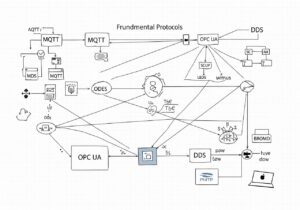
- IIoT enhances traditional manufacturing through connectivity.
- Predictions enable proactive maintenance and reduce downtime.
- Key protocols include MQTT, OPC UA, and DDS.
- Integration with AI and 5G revolutionizes operations.
- Security requires layered strategies to mitigate risks.
- Applications span across industries, enhancing efficiency and safety.
Definition and Core Components of IIoT
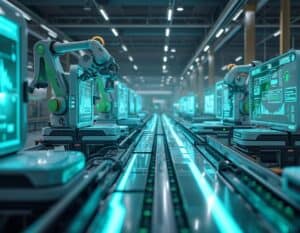
Industrial Internet of Things (IIoT) refers to the integration of smart sensors, devices, and machinery into industrial processes, enabling real-time data exchange and communication among equipment. It involves a network of connected devices that gather, monitor, and analyze data to optimize performance and increase efficiency. IIoT plays a big role in creating “smart factories,” where machinery communicates autonomously to streamline operations, enhance productivity, and reduce downtime significantly.
Core components of IIoT include advanced sensors, actuators, and connectivity solutions that facilitate data collection and transmission. These components operate on a variety of communication protocols such as MQTT, CoAP, and HTTP, allowing seamless inter-device communication. Additionally, gateway devices process raw data from sensors before transmission.
Fact: in industries like energy, IIoT has been shown to improve operational efficiency by as much as 25%.
Key Differences Between IoT and IIoT
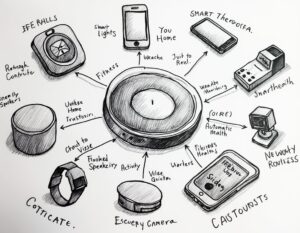
The Internet of Things (IoT) primarily focuses on connecting consumer devices, such as smart thermostats, wearables, and smart home gadgets. These devices are generally utilized to enhance user convenience and efficiency in daily activities. The Industrial Internet of Things (IIoT), on the other hand, centers around industrial applications, such as manufacturing machines and supply chain logistics, aiming to optimize operational performance, improve safety, and increase reliability in industrial settings.
Another differentiating factor lies in the scale and complexity of the systems involved. IoT solutions often address smaller networks of devices, which require straightforward integration and user interfaces. In contrast, IIoT involves large-scale systems within an industrial framework. These systems require advanced integration capabilities to manage complex data flows, interoperability among legacy machines, and seamless communication between various stakeholders, including suppliers, manufacturers, and service providers.
Security requirements differ significantly between the two domains:
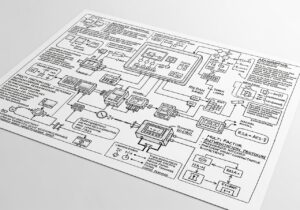
- consumer IoT may prioritize user experience and convenience,
- IIoT has heightened security needs due to the potential consequences of cyberattacks on critical infrastructure. Hackers gaining access to an industrial control system could disrupt operations or cause physical harm. Consequently, IIoT systems often implement stringent security protocols, including advanced encryption methods and multi-factor authentication, to safeguard sensitive data against unauthorized access.
IIoT systems are also designed for high reliability and availability, which can often be overlooked with consumer-oriented IoT devices. Industrial applications typically require continuous operation, and therefore, IIoT solutions are engineered to minimize downtime through predictive maintenance and immediate fault detection.
Implementing predictive maintenance in industrial settings can reduce maintenance costs by 25% to 30% while increasing equipment availability by up to 20%.
In terms of data management, IIoT emphasizes the use of big data analytics, enabling organizations to sift through vast amounts of sensor data to gain actionable insights. Consumer IoT, while still data-driven, may depend on simpler analytics.
| Concept | IoT (Internet of Things) | IIoT (Industrial Internet of Things) |
|---|---|---|
| Focus | Connecting consumer devices (e.g., smart thermostats, wearables) | Industrial applications (e.g., manufacturing machines, supply chain logistics) |
| Primary Goals | Enhance user convenience and efficiency | Optimize operational performance, improve safety, increase reliability |
| Scale and Complexity | Smaller networks of devices, straightforward integration | Large-scale systems, advanced integration capabilities |
| Data Management | Simpler analytics | Big data analytics for actionable insights |
| Security Requirements | Prioritizes user experience and convenience | Heightened security needs with stringent protocols (e.g., encryption, multi-factor authentication) |
| Reliability and Availability | Less emphasis on continuous operation | Designed for high reliability and continuous operation, predictive maintenance |
| Productivity Impact | Not specifically mentioned | Can boost productivity levels by up to 30% |
| Cost Management | Not specifically mentioned | Predictive maintenance can reduce maintenance costs by 25% to 30% |
IIoT Architecture and Communication Protocols
The architecture of the Industrial Internet of Things (IIoT) can be broadly categorized into several layers, including the Edge Layer, Communication Layer, and Cloud Layer. In the Edge Layer, devices such as sensors and actuators collect data directly from manufacturing equipment or operational environments.
These devices may operate using low-power technologies like LoRaWAN or Zigbee. The Communication Layer facilitates data transmission between the edge devices and the cloud or on-premise servers, primarily through protocols such as MQTT, CoAP, and HTTP. This layered approach allows for effective data management and scaling as system requirements evolve.
| IoT (Internet of Things) | IIoT (Industrial Internet of Things) | |
|---|---|---|
| Data Volume | Typically lower data volume, focusing on individual consumer devices. | High data volume, involving numerous sensors and devices within industrial environments. |
| Protocols | HTTP, MQTT, CoAP, WebSocket. | OPC UA, MQTT, DDS, Profinet. |
Data generated in IIoT environments can be voluminous and complex. Utilizing protocols like OPC UA (Open Platform Communications Unified Architecture) enables interoperability among industrial systems. OPC UA allows devices from various manufacturers to communicate seamlessly, enhancing operational efficiency.
| Protocol | Use Case | Advantages |
|---|---|---|
| MQTT | Messaging for low-bandwidth devices | Lightweight, efficient |
| OPC UA | Device interoperability | Standardized, secure |
| HTTP | Web services | Widespread compatibility |
Tip: Implementing a hybrid architecture combining edge and cloud computing can significantly enhance both data processing speed and system resilience.
Benefits and Impact of IIoT on Industries

The integration of the Industrial Internet of Things (IIoT) into various industries has led to significant improvements in operational efficiency and productivity. By connecting machines and devices, manufacturers experience enhanced real-time monitoring and analytics, which result in better decision-making. This reduction directly correlates with increased production capacity and reduced operational costs, showing a clear pathway toward a more streamlined manufacturing process.
IIoT enhances asset management by enabling predictive maintenance strategies. Companies can track equipment performance and predict failures before they occur, thus minimizing unexpected downtime. A report by McKinsey highlighted that predictive maintenance can reduce maintenance...
You have read 50% of the article. The rest is for our community. Already a member? Log in
(and also to protect our original content from scraping bots)
Innovation.world community
Login or Register (100% free)
View the rest of this article and all members-only content and tools.
Only real engineers, manufacturers, designers, marketers professionals.
No bot, no hater, no spammer.
Frequently Asked Questions
What are the core components of the Industrial Internet of Things (IIoT)?
What are the key differences between IoT and IIoT?
What is the typical IIoT architecture and its communication protocols?
What are the main benefits of implementing IIoT in industries?
What security challenges are associated with IIoT environments?
Can you provide real-world use cases of IIoT in various industries?
How does IIoT integrate with emerging technologies?
Related Topics
- Digital Twin Technology: a virtual representation of physical assets or systems used for analysis and simulation.
- Edge Computing: processing data closer to the source to reduce latency and bandwidth use.
- Interoperability Standards: frameworks that ensure different devices and systems can work together seamlessly.
- Smart Manufacturing: an approach that incorporates IIoT for increased efficiency and flexibility in production processes.
- Remote Monitoring: observing and managing equipment from a distance using IIoT technologies.
- Predictive Analytics: utilizing statistical algorithms and machine learning techniques to identify risks and opportunities from data.
- Supply Chain Integration: connecting various elements of the supply chain using IIoT for improved transparency and efficiency.
- Automation and Robotics: employing robotic systems in conjunction with IIoT to enhance operational performance.
- Resilient Networks: creating communication networks capable of withstanding failures while maintaining functionality.
- Real-time Data Processing: handling and analyzing data as it is generated for immediate insight and action.
- Workforce Empowerment: integrating IIoT solutions that provide workers with real-time information and insights to enhance productivity.
- Data Visualization Tools: software that converts complex data sets into visual formats for easier interpretation and analysis.
- Cybersecurity Frameworks: strategies designed to protect IIoT systems against cyber threats and vulnerabilities.
External Links on Industrial Internet Of Things (IIoT)
International Standards
(hover the link to see our description of the content)
Glossary of Terms Used
Application Programming Interface (API): a set of rules and protocols that allows different software applications to communicate and interact with each other, enabling the integration of functionalities and data exchange between systems.
Certificate of Analysis (CoA): a document issued by a manufacturer or testing laboratory that confirms a product's specifications, quality, and compliance with regulatory standards, detailing test results and methods used for analysis.
Industrial Internet of Things (IIoT): a network of interconnected devices and sensors in industrial environments that collect, exchange, and analyze data to enhance operational efficiency, improve decision-making, and enable automation in manufacturing, supply chain, and other industrial processes.
Internet of Things (IoT): a network of interconnected devices embedded with sensors, software, and other technologies that enable them to collect and exchange data over the internet, facilitating automation, monitoring, and control of various processes and systems.
Multi-Factor Authentication (MFA): a security process that requires two or more verification methods from independent categories of credentials to authenticate a user, enhancing protection against unauthorized access. Common factors include something the user knows, possesses, or is.
User experience (UX): the overall satisfaction and perception of a user when interacting with a product, system, or service, encompassing usability, accessibility, design, and emotional response throughout the entire interaction process.
User Interface (UI): a system that enables interaction between users and software applications, encompassing visual elements, controls, and overall layout to facilitate user tasks and enhance experience.
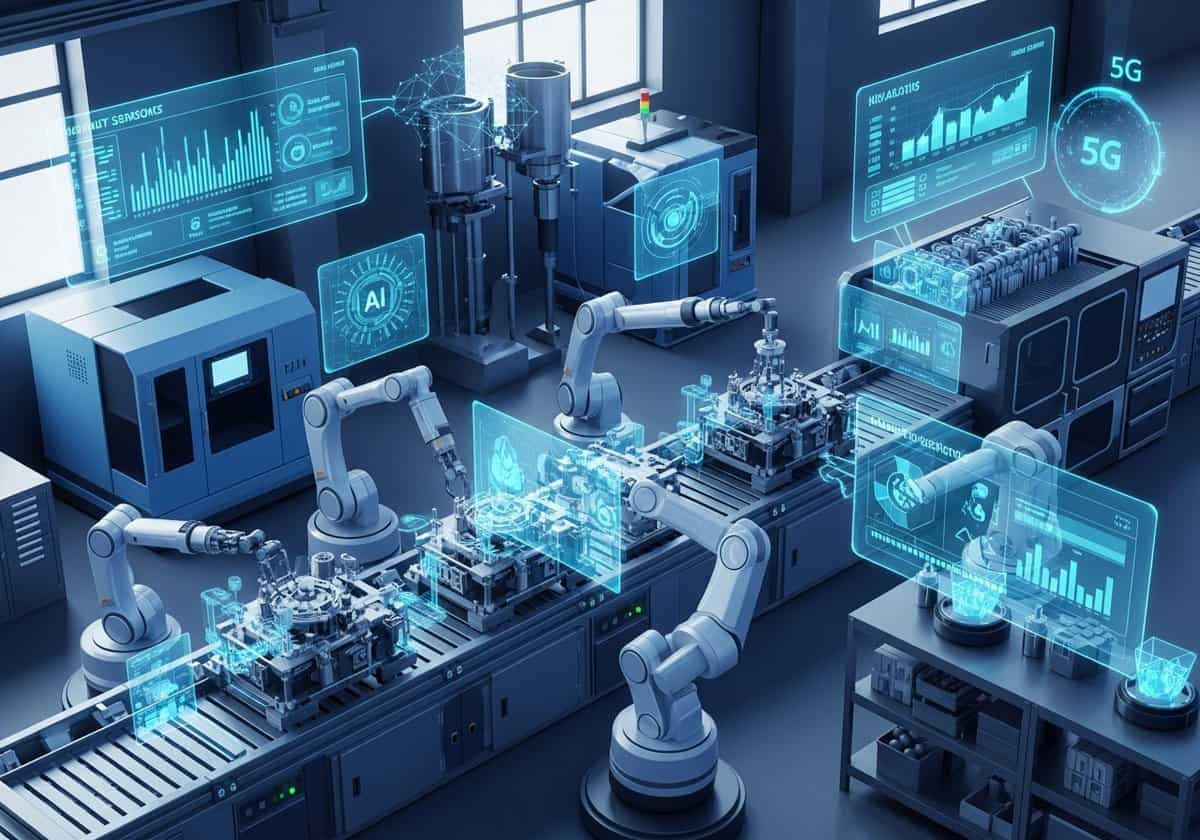











It might actually be making us too reliant on tech
Related Posts
Latest Publications & Patents on Perovskites
Latest Publications & Patents on Graphene
45+ Science Tricks for Games and Marketing: Data-Driven and Statistical Tricks
Use or Abuse 25 Cognitive Biases in Product Design and Manufacturing
Revised NIOSH Lifting Equation in Bench Ergonomics
Dark Web vs Darknet vs Deep Web: 101 & More